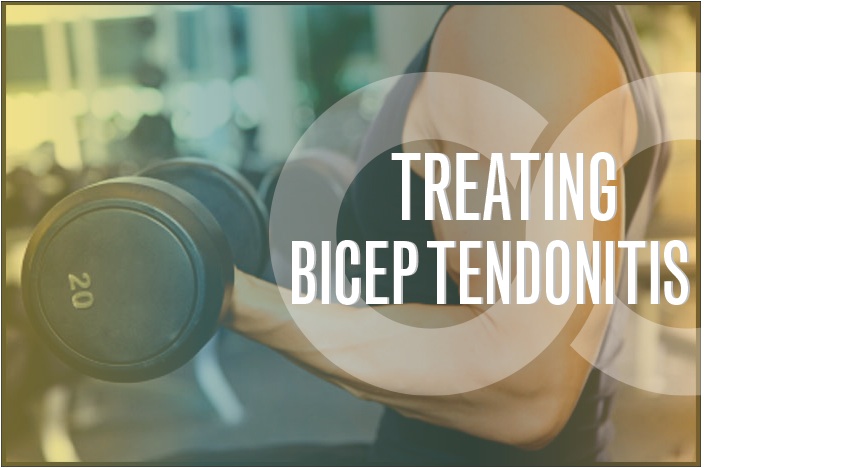Biceps Tendonitis

What is biceps tendonitis?
To understand biceps tendonitis better, one must first understand the difference between tendonitis and tendinosis. Tendonitis refers to an acute injury accompanied by inflammation. Tendinosis refers to a chronic (longer-term) injury in the absence of inflammation.
Biceps tendonitis is an acute injury of the biceps tendon of the arm. The biceps tendon is one of the few tendons in the body that spans two joints: the elbow and shoulder.
The biceps tendon itself is composed of two parts: the long head and the short head of the biceps. Typically, biceps tendonitis refers to the irritation of the long head of the biceps as it travels through the groove of the humerus (upper arm bone) and attaches within the anterior (front) aspect of the shoulder.
What does it feel like?
Although symptoms may vary from patient to patient, it is likely that you may be experiencing one or more of the following if you have biceps tendonitis:
- Anterior (front) shoulder pain that is sharp in nature
- Difficulty/pain with throwing a ball
- An audible “clicking” or a “catching” sensation in the shoulder joint
- The presence of a dull/ache after any overhead activity
- Difficulty carrying heavier items with the elbow bent
- Tenderness over the biceps closer to the shoulder joint
Why is this happening?
Some common culprits that can result in biceps tendonitis include:
- Repetitive overhead activity such as weightlifting
- Improper support/weakness of the rotator cuff muscles
- Poor posture and poor body mechanics
- An abrupt increase in an exercise routine
As a physical therapist, it is important to take a thorough subjective account of a patient’s activities and daily habits. This can lead us to an objective measurement of strength, range of motion and mobility within the shoulder and elbow joint.
Clinically, biceps tendonitis patients will be present with a rounded shoulder posture that will decrease the available space for the humeral head (upper arm bone) to move within the glenohumeral (shoulder) joint. This can create friction along the biceps tendon, which can be irritated by repetitive movements (throwing a baseball or performing an overhead press).
It is important that a physical therapist examines the entire shoulder girdle complex to test the strength of the supporting muscles. With a rounded shoulder posture, it is common to see weakness in one or more of the rotator cuff muscles, which decreases the ability to stabilize the humeral head.
How is it treated?
- Pain medication: anti-inflammatory medication can help if this is an acute episode
- Range of motion: a physical therapist can assist with assessing the amount of movement that you have within the shoulder and elbow joints to promote proper movement
- Strength: it is crucial to have the proper balance and stability of the supporting musculature. Often times, the muscles on the front part of the shoulder complex are over working causing the rest of the shoulder muscles to become inefficient
- Manual therapy: a physical therapist can perform joint mobilization techniques, soft tissue massage/mobility and other hands on treatment to restore balance to the affected arm
Prevention
- Posture: it is important to make sure that your postural supporting muscles are working appropriately (see the muscle releases provided below)
- Strength: performing rotator cuff strengthening exercises correctly and on a regular basis
- Proper lifting/holding mechanics: remember to avoid carrying or lifting heavy objects away from the body. Keeping weight closer to the body will decrease the force at the joints and muscles
Releases
- Biceps Release
- Triceps Release
- Latissimus dorsi Release
- Upper trapezius/Levator Scapulae Release
Exercises:
- Thoracic mobilization + Sotts press
- A’s/W’s